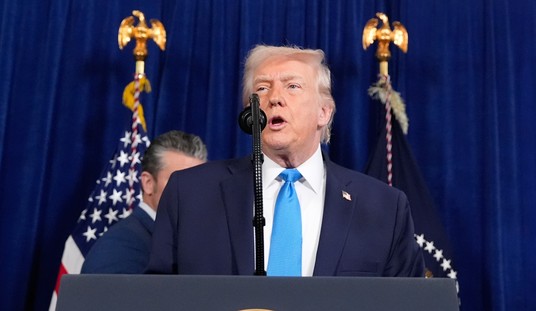Members of the Tea Party and the conservative movement need to be prepared for some serious disappointment if news reports are correct. News reports have emerged indicating that that “dollar for dollar” cuts to spending promised as part of a grand bargain to increase the debt ceiling may be pro-rated over 10, 20 or even 25 years. It is easy for politicians to promise future cuts to spending when many of these politicians cutting the deal will be long gone from Washington, DC.
Politically this deal is very attractive for incumbents of both parties. A $2.4 trillion debt limit increase would negate the need for a further increase in the debt limit until after the next Congressional and Presidential election. This level of a debt limit increase would protect House and Senate incumbent Republicans and Democrats from any further politically difficult votes before they have to face the voters in November of 2012.
Furthermore, the deal may include cuts over a time period that will exceed the 10-year budget window of the Congressional Budget Office making these cuts unenforceable. If an agreement is reached on a $2.4 trillion increase in the debt limit for $2.4 trillion in cuts over 10, 20 or 25 years, politicians would get the double benefit of not having to vote on increasing debt over the next year and a half and they can claim they cut spending by $2.4 trillion. This deal may make for a good talking point for politicians of both parties, but it would turn out to be bad deal for the American people.
Vice President Biden is leading bipartisan and bicameral negotiations on a comprehensive deal to increase the debt limit. These negotiations include Vice President Joe Biden, Senators Jon Kyl (R-AZ), Max Baucus (D-MT), Daniel Inouye (D-HI), and Representatives Eric Cantor (R-VA), Jim Clyburn (D-SC) and Chris Van Hollen (D-MD). Another meeting is scheduled for later this week.
The AP reports that Democrats are pushing for tax increases as part of the deal.
The Biden group is slated to have its sixth meeting Thursday at the Capitol. Kyl said the topics will include revenue increases sought by Democrats and a proposal to cap spending at a fixed percentage of the economy, say 20 percent. Republicans have promised to block any revenue increases, however, and the administration opposes the spending cap. If tax increases are not included in any deal, conservatives should not be all that happy, because this may be the bone that the negotiators throw to conservatives to buy a massive increase in the debt ceiling.
According to CQ and the AP, a deal is close.
CQ Reports today that Senate Republicans are working out a deal for $2.4 trillion in cuts that will be punted way into the future.
Senate Republicans are backing House GOP demands that a debt limit increase be paired with an equal amount of spending cuts, a formulation that suggests any bargain that would settle the issue through 2012 will require at least $2.4 trillion in budget reductions over the next decade or longer.
Some simple math is in order to understand this potential “deal.” If the deal were to cut $2.4 trillion over the next 10 years, then the cuts would be $2.4 in Fiscal Years 2012-24 equaling $240 billion a year. If the deal were to cut $2.4 trillion over 20 years, then the cuts would be $2.4 trillion in Fiscal Years 2012-2034 equaling $120 billion a year in cuts. Any window longer than 20 years is laughable and would amount to an empty promise by politicians today. It will be difficult, if not impossible, for Congress to enforce these promised cuts on a future Congress.
It is important to understand how Congress defines “cuts” to spending. If negotiators use an artificially high budget baseline to calculate spending over the next 10 years, then these promised cuts may not be cuts at all. For example, President Obama’s $3.7 trillion budget plan for Fiscal Year 2012 would have created $8.7 trillion in new spending, $1.6 trillion in new taxes and add $13 trillion in new debt over the next 10 years. It is easy to “cut” spending if Congress uses a bloated baseline to measure these promised future cuts.
It seems immoral to ask of future generations to shoulder the burden of $2.4 trillion in debt over the next two years in consideration for cuts to government spending over the next 10, 20 or 25 years. This is classic generational theft. A mortgage may be taken out by politicians in Washington today that the American people will have to pay off over the next few decades.
What options would make the Tea Party movement and conservatives happy? Well there are many ideas on the table. The most promising idea is Cut, Cap, and Balance. The House Republican Study Committee has deployed a Cut, Cap, and Balance plan including three elements.
- Cut – We must make discretionary and mandatory spending reductions that would cut the deficit in half next year.
- Cap – We need statutory, enforceable caps to align federal spending with average revenues at 18% of Gross Domestic Product (GDP), with automatic spending reductions if the caps are breached.
- Balance – We must send to the states a Balanced Budget Amendment (BBA) with strong protections against federal tax increases and a Spending Limitation Amendment (SLA) that aligns spending with average revenues as described above.
The Senate is expected to take up this call and to push for a Cut, Cap, and Balance Pledge. Expect conservative Senators to push over the next few weeks for a coordinated effort to force Congress to pass a Balanced Budget Amendment, an 18% cap on spending and cut programs today. This may be the landing place for conservative Members of Congress.
There will be members who don’t support any increase in the debt limit if Congress can’t pass dramatic and significant reforms. They believe the debt limit is a de facto balanced budget measure and is a great alternative to Cut, Cap, and Balance. These conservatives believe that not increasing the debt limit would force the federal government to live with the constraints of what revenues can be raised through selling of government assets and incoming tax revenues.
The bottom line is that any deal that spreads the cuts over a long period of time would be tough to enforce and may turn out to be an empty promise. Conservatives want budget reform, entitlement reform and specific cuts to spending if a debt limit increase idea is allowed to move forward.














Join the conversation as a VIP Member